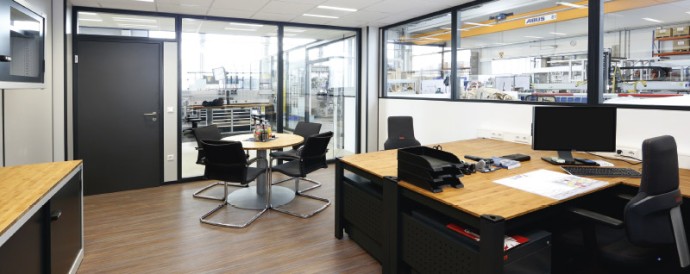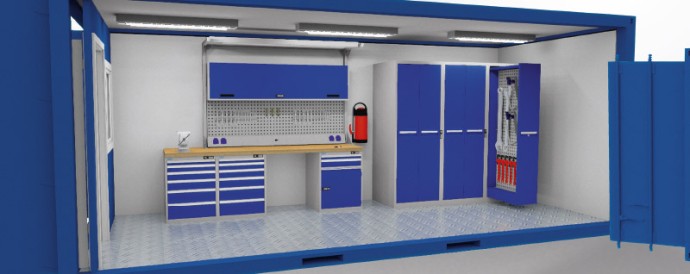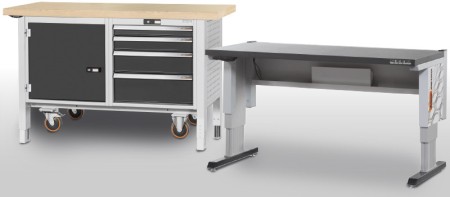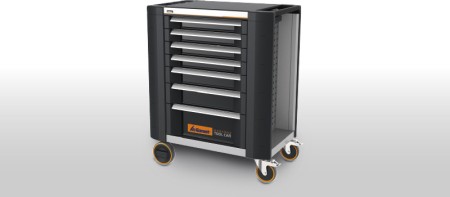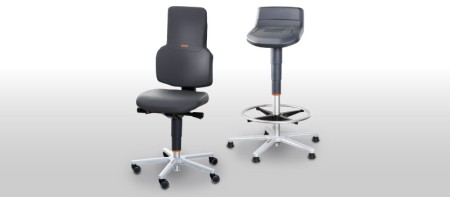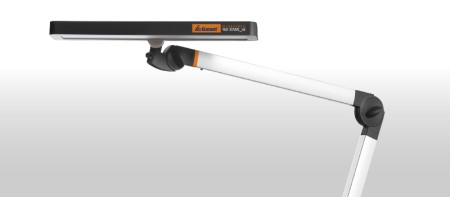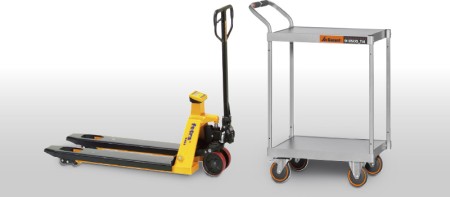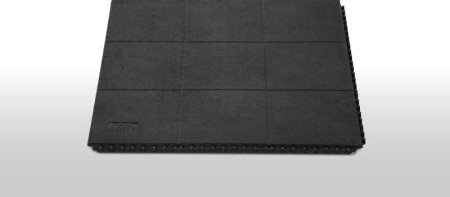An ergonomic work place – for the sake of your employees’ health
Ergonomics relates to human work and its laws. It questions what employees are capable of, and where their limits lie. In terms of ergonomic work place design, this means workstations, equipment, work systems and the surroundings must be adapted to people's needs - whether in the office, in the workshop or in the warehouse. The aim of an ergonomic work place is to reduce physical discomfort and mental stress as much as possible. At the same time, the employee should be able to work efficiently and without making mistakes.
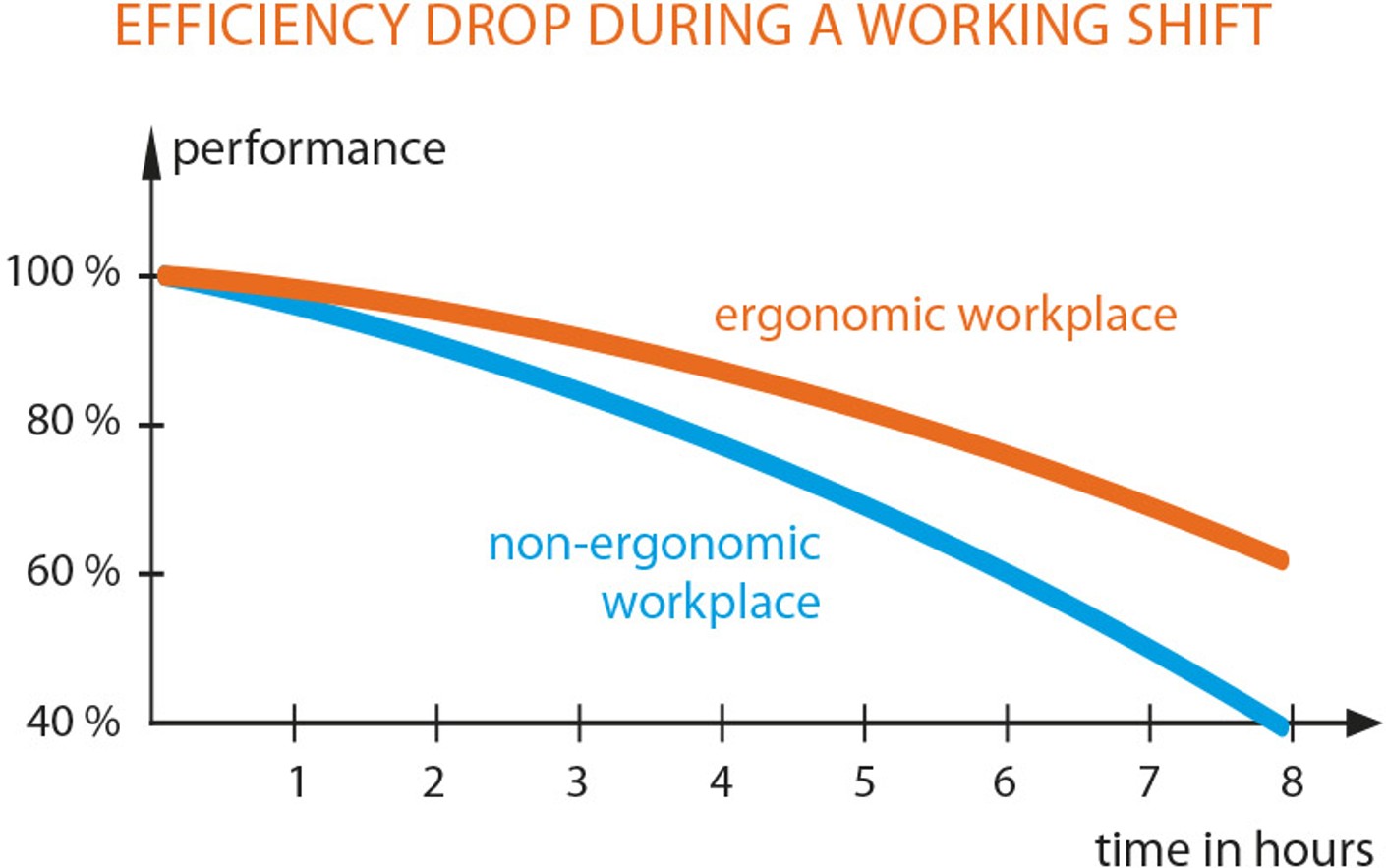
Even though setting up such a work place seems cost-intensive at first, there are numerous advantages, and ultimately cost savings. The risk of accidents and work-related illnesses decreases. This reduces the number of days’ absence over the long term.
Urgently needed skilled specialists, who will be working longer at the company in the future due to the ageing of society, stay healthy and fit for longer. Employees are also more efficient and motivated, which also benefits the quality of their work. Also, they feel generally better and more connected to the company, as the feel appreciated.
Optimal implementation of ergonomics at the work place
Many different factors influence employees’ performance at the work place. It is important to first identify the various problem areas, and find appropriate solutions.
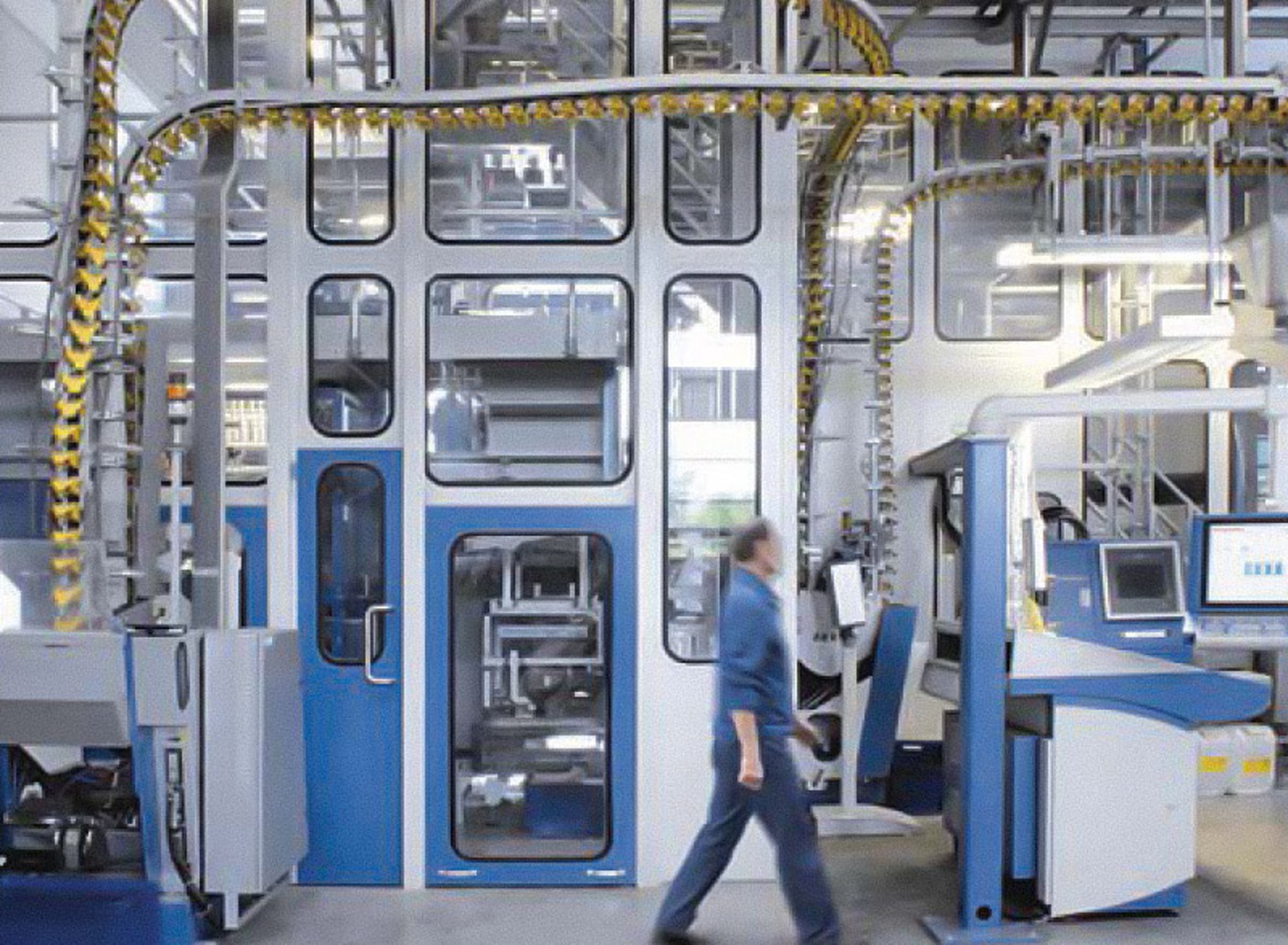
Noise as a major disturbing factor
Noise is a factor that is often underestimated. After eyesight, hearing is the second most important sense, and cannot be restored once it has been damaged. Disturbing noises at the work place can come from the surrounding environment, from other colleagues in conversation, or from machines on which the employee is working.
The noise level should be below 55 decibels so as not to impair health. Noise abatement solutions must first and foremost start at the source, such as by means of:
- Sound absorbers in the form of acoustic panels or walls and sound-insulating mats
- Cabinets, dividers and sound-proof booths
- Allowing sufficient space between two workstations
This optimal sound-proofing of noise sources relieves the strain on the hearing and enables concentrated working, even in noisy factories. Since no protective equipment is required in room and partition wall systems, employees enjoy maximum comfort and ergonomic freedom of movement.
Efficient sound insulation can be achieved with the following elements:
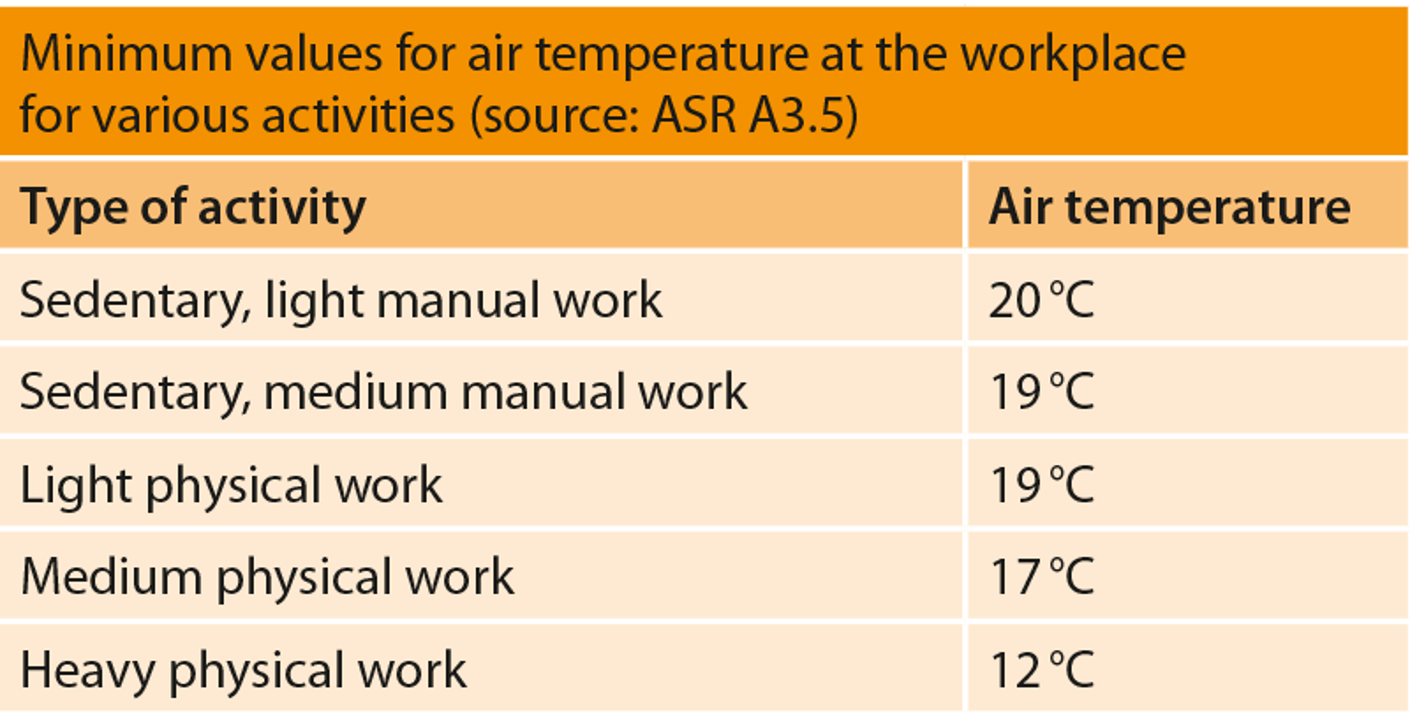
Pleasant climate for pleasant working conditions
Different air temperatures and humidity levels are considered pleasant depending on the intensity of the activity. Seated, light manual work is best done at 20 degrees Celsius. When carrying out heavy physical work, the ideal working temperature drops to 12 degrees Celsius. Humidity should be between 40 and 60 percent. Regular airing and large-leaved plants contribute to a pleasant working climate, especially in offices. Draughts represent a factor that should not to be underestimated, often resulting from poorly insulated walls, floors and windows. This can be mitigated by installing partition walls or relocating the workstation.
It is a fact that a good room climate promotes health and enhances performance.
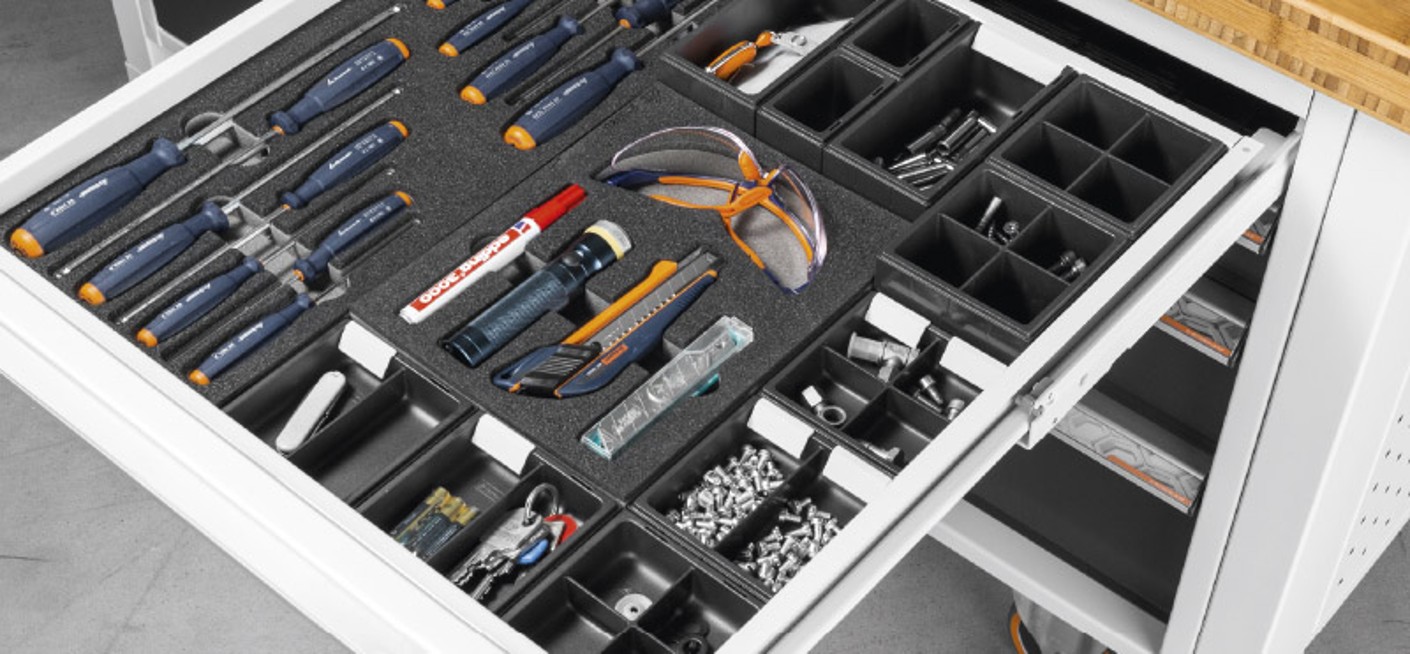
Good order for optimal work organisation
Modular arrangement systems and efficient organisation aid ergonomic working practices. Employees do not have to search around for the equipment they need, which saves them walking distance and time. The storage locations reflect the frequency of use: daily, weekly, monthly. The more frequently used equipment should be quickly and easily accessible. These rules form part of the 5S methodology. Originating from Japan, the tried and proven improvement methodology ensures a clean, tidy, organised, safe and efficient work place in five stages. It is soundly embedded as a process within the company culture, and put into practice by all employees at all levels of the company hierarchy.

Colour and lighting concepts for well-being and efficient work design

Complex workflows require increasing attention to the workspace as a whole. The colour and lighting concept plays a key role in this. Colours fulfil several functions in an ergonomic environment. They identify information, provide security of orientation, and help to maintain order. And colours also have a psychological effect: Green, for example, has a calming effect; yellow gives energy. An attractive design in workshops, production areas and laboratories also helps maintain the employer's quality standards and encourages employees to treat their work places with care. A well-maintained, well-designed and attractive working environment has a positive overall effect on employees’ well-being and efficiency.
It is also important to ensure sufficient daylight and an outside view at every workstation. At the same time, dazzling sunlight should be avoided so as not to impair performance. The intensity of ergonomic work lighting is matched to the task at hand. As a rule of thumb: the finer the detailing, the brighter the light should be. The colour temperature is also a factor.
The optimum is a mix of direct and indirect lighting, a workstation light and daylight.
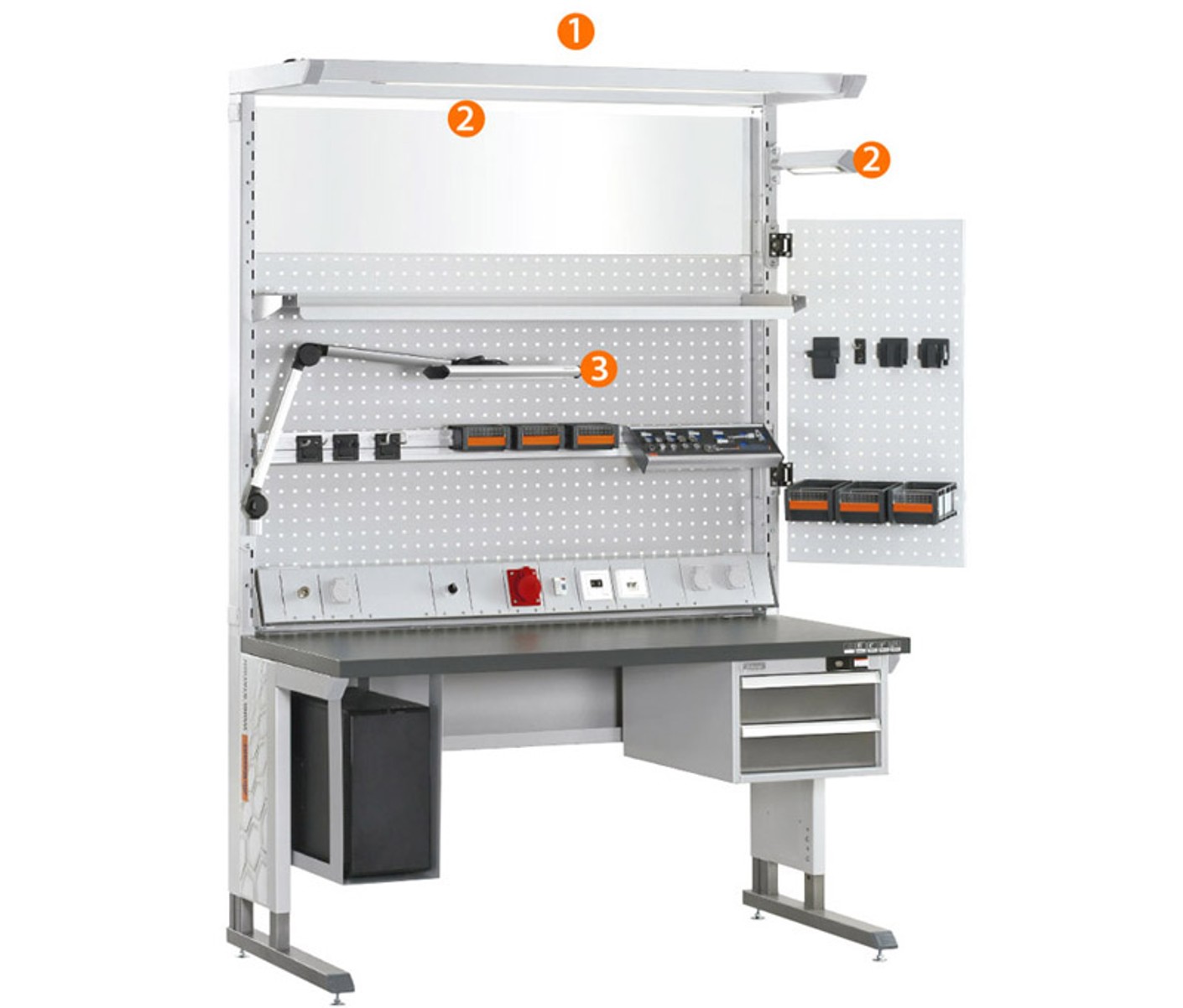
1. Room lighting:
- Diffuse light
- Lighting throwing little shadow.
- Backlighting.
2. Workplace lighting:
- Immediate surrounding area.
- Individually dimmable and adjustable.
3. Task-specific lighting:
- Small cone of light for visual tasks.
- Individually dimmable and adjustable.
Task-specific lighting and magnification:
- Meets the highest standards of visibility.
- Individually dimmable and adjustable.
- Double magnification and large field of view.
- Small cone of light for visual tasks.
Individual work place design
Many other individual criteria are important in terms of creating an ergonomic work place.
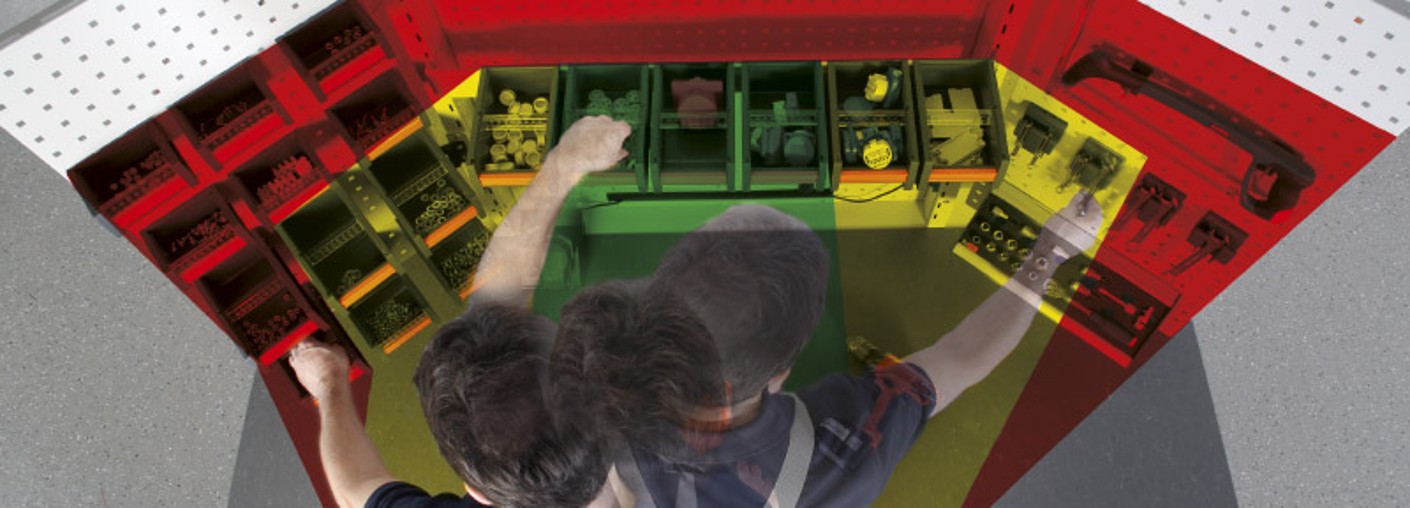
Area of reach and visual space
Every employee’s body size is different, so they have a differing area of reach. This term refers to the area of a workstation where the employee can reach all elements without leaving his or her seat or standing position.
A person’s visual space is only sharply focused within a small area. So the area of reach and visual space should be optimally coordinated to avoid unnecessary head movements and frequent bending over to reach tools and equipment.
Area of reach within the maximum field of view:
- For larger motor movements.
- Only upper arm and lower arm movements for activities which require no focused vision and for which reaching without direct visual control is acceptable.
Work centre – two-handed zone in the optimum field of view:
- Optimal for work requiring both hands.
- Within the field of view of the employee.
- For fine motor control.
- Pure lower arm movements for activities where precise visual control is essential.
Single-hand zone within the maximum field of view:
- For occasional handling.
- With movement of the shoulder and torso.
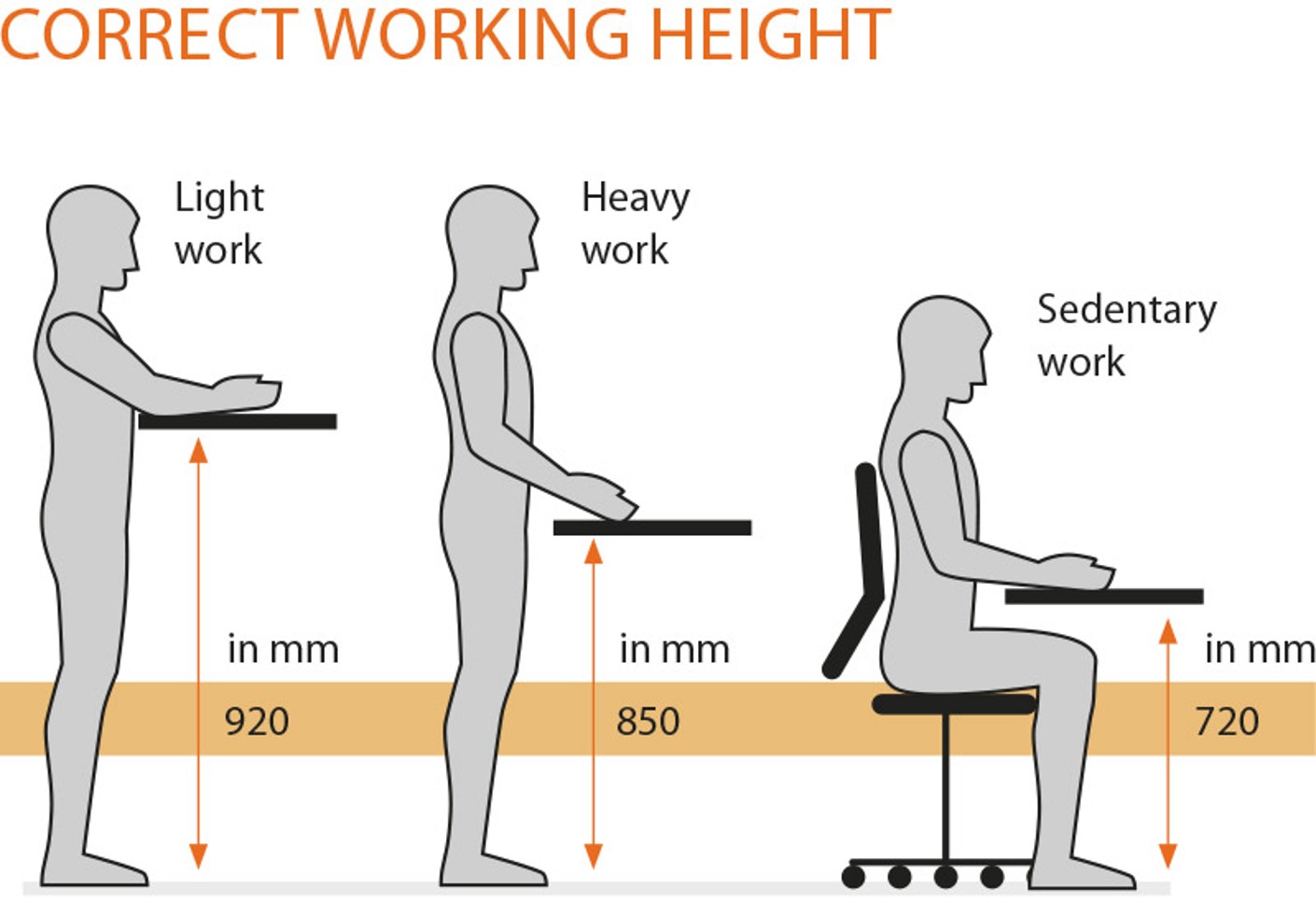
Standing and sitting
In order to avoid musculoskeletal disorders, it must be possible to work without straining the back. Solutions in this regard include, for example, height-adjustable work chairs and worktables that ensure an optimum seating position. The ideal working height is between 800 mm and 1500 mm. Because working above heart height or bending below 800 mm puts a disproportionate amount of strain on the body, this should be avoided.
Not only the work place but also the equipment can be adapted to the individual's body size. With a height adjuster, for example, the vice and workpiece can be easily adjusted to the optimum working position. This adjustment is particularly important for trainees in schools and training workshops, so as to prevent serious harm as a result of bad posture during the growth phase.
Non-slip anti-fatigue mats are of great benefit for standing activities. Their resilient surfaces promote better weight distribution, so reducing muscle and joint pain and enhancing employees’ performance capability, working efficiency and well-being.
Lifting and carrying
If employees have to continuously carry heavy loads, damage to the spine can result.
Consequently, the law stipulates maximum acceptable load weights depending on the person’s sex, age and physical condition. Tool trolleys relieve strain on employees and protect their health.


Equipment firmly in hand
It is important to choose equipment with ergonomically shaped, non-slip, soft-grip handles. Good grip is especially important where hands become wet or oily. Only when a screwdriver, trolley or ladder is properly gripped can work be carried out ergonomically, safely and efficiently.
Ergonomic workstations and storage equipment comprises the following elements:

Ergonomics is part of preventive occupational health and safety. Personal protective equipment (PPE) is also required in many areas, for example eye protection, hearing protection, head protection, breathing protection, gloves or work shoes. It additionally protects employees’ health.
In addition to ergonomics at the work place, the 5S method is also an important topic. Workstations and storage also include workstation systems, tool cabinets, tool issuing systems, roller cabinets, tool trolley, storage technology, environmental technology, ladders and platforms and room systems and containers. This takes you to the overview.

Do you want to arrange a consultation on workstations and storage solutions?
Complete ergonomic solutions from a single source: Our know-how is available to you throughout, from initial 3D design right through to installation.
Our team of experts in workstations and storage solutions will advise you and help you to plan and develop comprehensive, all-embracing ergonomic solutions, thereby making your working practices more efficient and increasing your productivity.
- Competent expert advice from requirements analysis to installation.
- The perfect range of products and solutions for more efficient working practices.
- Significant cost and time saving.

